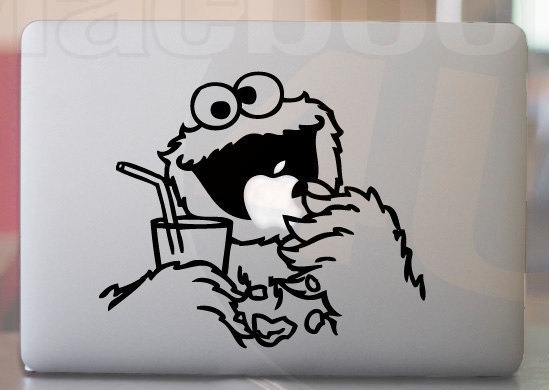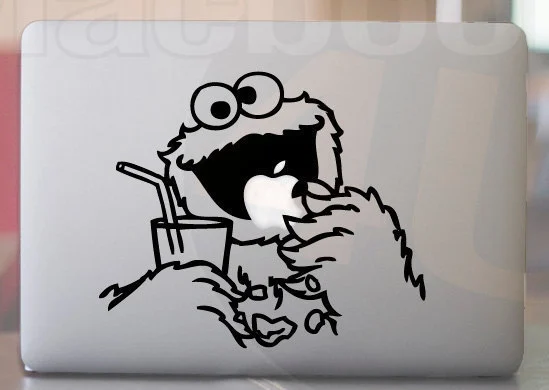Yesterday’s meme-of-the-day seemed to be that Apple has too many devices and isn’t focused enough.
UX leader (but also Google employee) Luke Wroblewski wrote:
“When Jobs returned to Apple in 1997 the company had lost its way w a confusing lineup of undistinguished products” and posted a photo of similar-looking iOS devices: https://twitter.com/lukew/status/712322467180642305
Sounds damning, doesn’t it? Well, not if you put any effort into thinking it through.
Andreessen-Horowitz’s Ben Evans had a similar thought, talking about the iPad Pro 9.7″ introduction yesterday: https://twitter.com/benedictevans/status/712333128409350145
He makes it sound like the iPad Pro is replacing the iPad Air (as in “v2 rethink”), and even questioned the future of the iPad mini.
Does Apple have too many devices, too many colors, too many screen sizes, too many options?
When Apple was a much smaller company, it made sense to have laser focus on just a few great product lines: Macs, then iPods, then iPhone, then iPad.
But as a company starts selling hundreds of millions of devices every year—no matter how beautifully and functionally elegant they are—you risk looking ordinary. People like to be unique (think about Android & Windows users’ desire to “skin” the OS).
Perhaps you saw this tweet a year ago, showing a lineup of identical-looking Apple MacBooks: https://twitter.com/mmcauliff/status/557715212858839040
That’s very impressive for Apple, that they’ve captured so much mind share and sales of high-end devices and branding power. But there’s a downside to that much popularity: familiarity and sameness.
How does a user/owner stand out if everyone else’s Apple device looks exactly like theirs? If every MacBook is 13.3″ or 15″, if every iPhone is 4″, if every iPad is 9.7″, and every Apple device is silver with a white edge, they all start to look the same, no matter how beautiful.
With iPhones, people buy custom cases. Even if they have to sacrifice thinness and elegance, owners now have a device they can show off to others, yet it’s still an Apple iPhone.
Similarly, think back to a few years ago when we started seeing stickers all over Apple MacBooks:

I thought it ruined the elegance of the device, but I understood how there was a creeping sameness about all these MacBooks.
There’s historical precedence for a business that made identical devices getting overrun by more agile competitors. You many know the business story of how General Motors overtook Ford: Henry Ford got popular by making thousands of identical Model T’s in black, and only black. After selling millions of them, though, they all started to look the same. Meanwhile, GM came out with different models and different colors to sell to different markets.
It’s more than just branding and appearances
While Apple devices are more upscale than a Model T, they ran into the same problem of sameness after selling hundreds of millions of devices. So now iPhones, iPods, iPads, and even MacBooks come in different colors.
And it’s more than just branding and appearances.
As a product becomes more popular, and sells hundreds of millions of devices, to gain the most users you need to handle different use cases: some want the lightest device (Air’s), some want to sacrifice weight for power (Pro’s), some have small hands and want 4″ iPhones or iPad mini’s, some have big purses and want 5.5″ iPhones or 12.9″ iPad Pro’s.
This isn’t just for iOS devices, either. Macs have done this for years: MacBook’s/MacBook Air’s, MacBook Pro’s, iMac’s, Mac Pro’s, Mac mini’s. You can customize screen size, RAM, CPU speed, and storage. This is nothing new.
Each of these models does not have to be best-selling. An iPad mini that sells fewer units than an iPad Pro is not necessarily a failure. A business needs to provide options for different people, different needs, and different wants. What’s great for an individual is not necessarily what’s great for the enterprise or education.
Claiming that the debut of the 9.7″ iPad Pro means that iPad Air and mini were mistakes (or “v1”) is like saying that after Audi created the A4, and then the A3 and A6, that the A4 was now a superfluous “tweener” car that no longer made sense. Not true at all.
Which devices any one person choses varies considerably based on needs and wants for technology, power, performance, and fashion
Not only does Audi make the A2, A3, A4, A6, A7, & A8 (& A8L) they also make the A5 (essentially a 2-door A4), TT, S3, S4, S5, S6, S7, S8, R8, RS4, RS5, Q3, Q5, Q7, etc., etc. Success is measured by many factors, such as whether it provides an inexpensive entry point to the brand, how it competes with similar cars from similar brands, how much profit it makes, how well it does in specific markets (North America, Europe, & Asia are quite different), whether it’s a flagship for the brand, etc.
One way that Apple is different from a car company (although it may be a car company, too, someday), is that people typically have more than one Apple device. Let’s say people average 3-4 Apple devices: which devices any one person choses varies considerably based on needs and wants for technology, power, performance, and fashion.
- The best devices for me are an Apple Watch 42mm with leather band, iPhone 6s, iPad Pro 12.9″, and 27″ iMac.
- Someone else may prefer an Apple Watch Sport 38mm with nylon band, iPhone SE, iPad mini, and 12″ MacBook.
- Yet another person might want a black Apple Watch 38mm with steel band, iPhone 6s Plus, iPad Air, and Mac Pro.
So, does Apple make too many devices? Does the introduction of a Pro device mean an Air or a mini is destined for the dustbin? I don’t think so.
As technology overtakes so much of our lives, and our Apple devices replace phones, cameras, videocameras, maps, GPS units, MP3 players, video players, watches, gaming units, PCs, and more, we need to be able to pick and choose the weight, performance, style, and fashion that suits us best.
One size does not fit all.

Agreed–this one is kind of silly.
The issue isn’t necessarily with having lots of models. It’s having lots of redundant models. Whether your MacBook Air has a silver or gold color does not make it a different “model”–even if Apple considers them to be different for their accounting purposes.
Back in ’97, you had the “consumer” line, Performa, and the pro line, Macintosh. The only difference, really, was that the Performa line used ATA hard drives and the pro line used SCSI. As Steve said, if I asked someone, “Should I buy a Performa 7500 or a Macintosh 7600?” they couldn’t really answer the question. The two were essentially the same, but one was cheaper.
So having lots of models is fine, as long as there is a differentiating factor. MacBook Airs are thin and light at the cost of performance. MacBook Pros are faster at the cost of weight and size. Yeah, the MacBook kind of sticks out like a sore thumb.
The other reason for Apple having lots of models of phones is arguably because they have to. While I can buy an Android phone of any shape, size, and color from one of the hundreds of device makers, Apple’s customers must depend on Apple to come up with the form factor. So, yes, Apple ends up making lots of iOS devices in different sizes because there’s demand for all of them. And when you’re trying to get market share, not having a device that’s the right size can make a difference between a sale and a non-sale.
Yes, exactly.
And yet with all these devices, it’s still easy for developers because there are only 2 sizes of iPad (mini’s, Air’s, and 9.7″ iPad Pro are all 1024×768; 12.9″ iPad Pro is about twice that), only 3 sizes for iPhones & iPod touch (4″, 4.7″, 5.1″), and only 2 Apple Watch variants (38mm & 42mm), and 1 size for Apple TV.